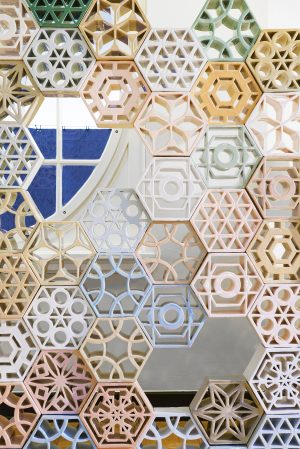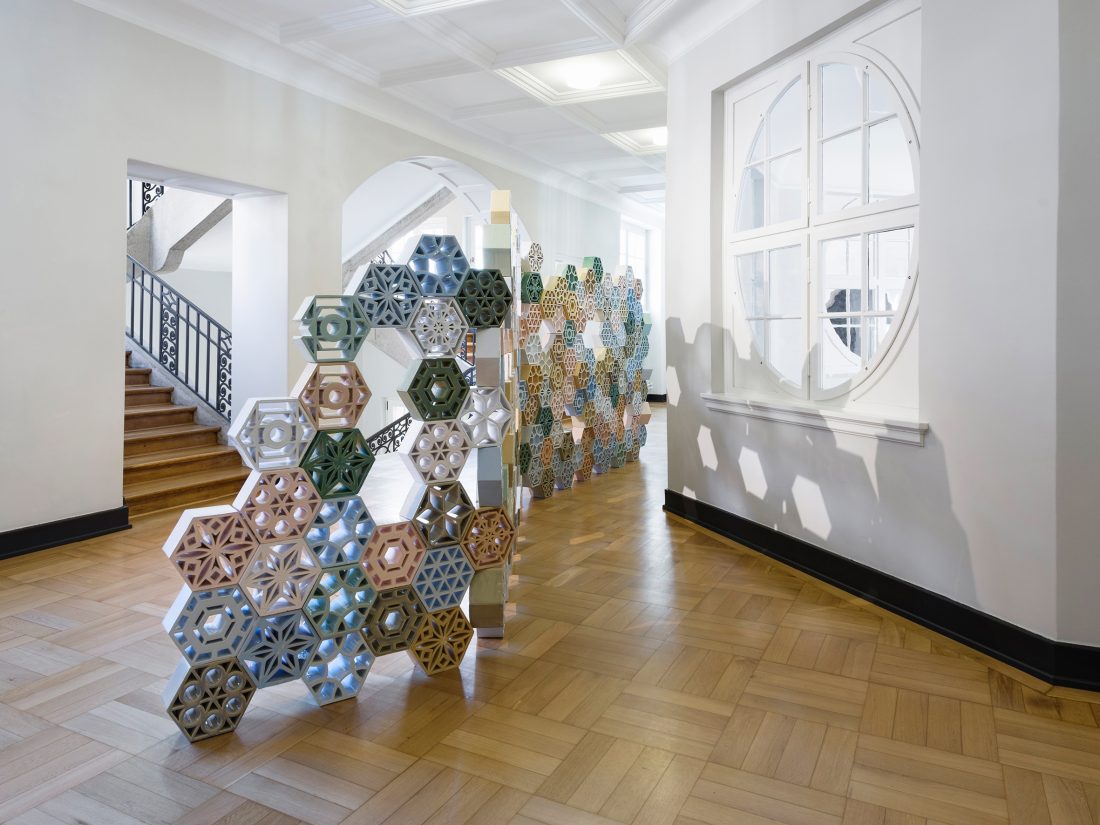documenta 14 (8. April – 16. July 2017) / (10. June – 17. September 2017)
documenta 14, Athen, Greece, 2017
Drum, a table. Chairs, a string section. Resonating bodies: the forms that hold us, sounds that form us, forms we play in the artist’s music room. What artist? Nevin Aladağ. What room? The one that sounds. To furnish a room with a voice, to set the scene (for future sessions) with future instruments—is what Aladağ arranges in her Musikzimmer (Music Room, 2015). Her forms—furniture turned instruments, resonating and receiving and speaking bodies all at once—call for bodies: hands to beat the table or pluck the chair; bodies to bounce sound off; bodies for resonance, for reverberation, for resistance…
Her sculpture, video, and performance translates and transitions between form and function, sound and silence, movement and rest. Her work travels across formal and functional borders [drum], aesthetic and political categories [drum], through historical and ideological territories [drum]. She modifies objects as our bodies [drum] are modified; she situates objects [drum] as our bodies are situated; she furnishes rooms as our bodies need [drum] furnishings, need music [drum]. Period rooms or music rooms, court or parlor or club [drum]: the artist’s musical installations have variously evoked the bourgeois European musical salons [drum] of the sixteenth and seventeenth centuries and the more profane [drum] rebetiko clubs of late-twentieth-century Athens, with their bouzouki, their oud, and their daouli [drum]. How does one appoint a room? How to sit in a chair? How to produce a sound? How to produce a body [drum] among other bodies? How to play such borders? In past works Aladağ has traced other kinds of translation: the video Borderline (2014) offers the blue view from a boat, the pale wake of its path, and the ship’s GPS screen [drum], which charts the marine border between Greece and Turkey. On a split screen divided into a grid of four, City Language I (2009) offers the urban exterior itself as a kind of music room. A flute held out the car window is played by the wind; claves tumble down streets; a tambourine skates across the water behind a boat. The landscape as orchestra, room as ensemble, objects as apparatus, each thing as performance, possible [drum]. The body instrumentalized—an instrument. The instrument as form of rest or sound. The room (of the artist or the poem) as drum.
(Excerpt from the text: on commission of Documenta 14, Athen, 2017
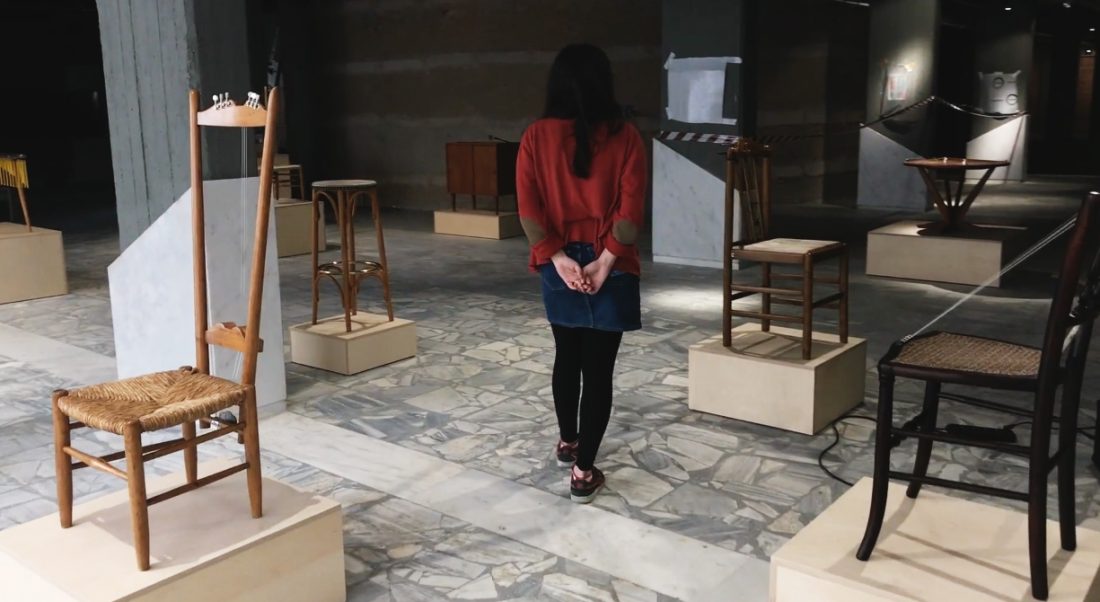
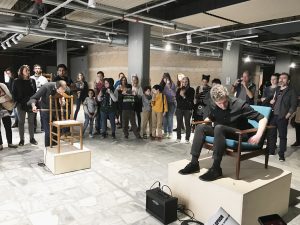
(photo credit: Nevin Aladağ)
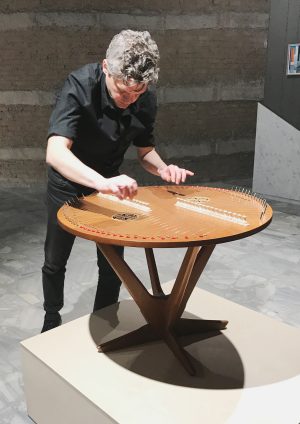
(photo credit: Nevin Aladağ)
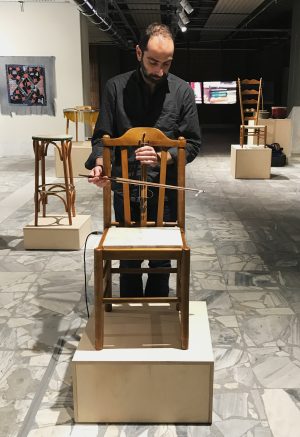
(photo credit: Nevin Aladağ)
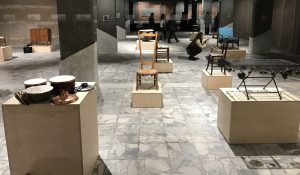
(photo credit: Mathias Voelzke)
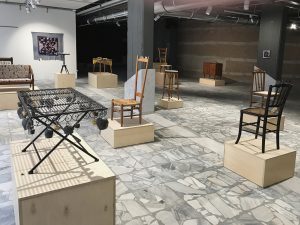
(photo credit: Mathias Voelzke)
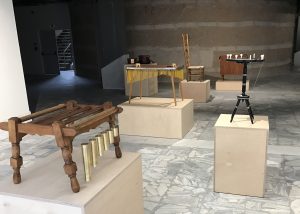
(photo credit: Mathias Voelzke)
documenta 14, Kassel, Germany, 2017 // A jali – net or grid in Sanscrit – is the term for a perforated stone or latticed screen, usually with an ornamental pattern used in Indian architecture to structure spaces. A screen can be source of protection, a cover, or a veneer that can physically or visually separate things and keep them at a distance. A paravent, in English usually called a folding screen, is usually meant to screen people from view as they change clothes. However, a screen also can display something, broadcast it, or function as a projection surface. So while on the one hand a screen can protect its user from the light, a display screen sends light into the eyes of the viewers. Nevin Aladağ’s series Jali engages with precisely this duality: to enable as well as to hinder the gaze. In their book on film theory, Thomas Elsaesser and Malte Hagener write about just this duality: “Screens hide and protect, but they also open up and reflect. Screens are (semi-permeable) membranes through which something can pass, but they can also keep things off – they can sieve and filter. … So screens are something between us and the world, protecting us, but also opening access.“[1] Aladağ’s work Jali for documenta 14 in Kassel consists of three interconnected architectural elements. Hexagonal buildings blocks designed by Aladağ form a fanlike shape, like that of a folding screen (paravent) or leporello. The individual building blocks of this folded wall in the public space are based on various patterns of Mashrabija, an architectural façade strategy in the Maghreb as well as in the Middle East. It allows for looking outside, simultaneously catching the gaze from outside in its ornamental pattern. This way, what is private is screened and protected from the public gaze. Aladağ collected the models for her pastel-colored ceramic blocks at various sites, and then developed heterogeneous matrices ranging from European Art Deco to Arab medieval architecture. She combines these elements into a geographically and culturally utopian object. For documenta in Kassel, Aladağ built a fragmented, permeable and porous wall, where the visual and physical separation by a screen fails in the best sense. Because in Jali Aladağs reflects symbolically on different patterns of revealing and hiding. As a concrete object in the world, Aladağ’s work enables a multi-perspective way of looking at and through something, which prefers exchange to shileding things off. (Text by Nico Anklam)
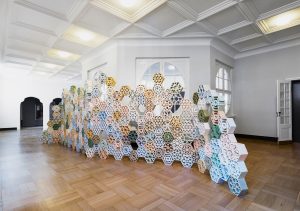
Jali, documenta 14, Kassel, Germany, 2017
(photo credit: Trevor Good)
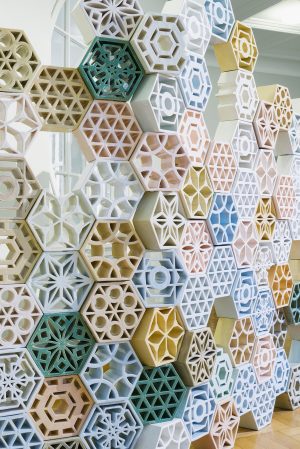
(photo credit: Trevor Good)
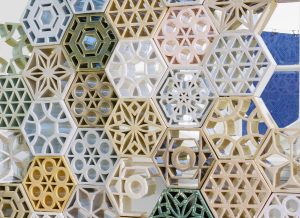
(photo credit: Trevor Good)
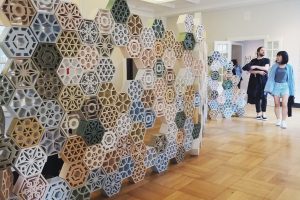
(photo credit: Aaike Stuart)

(photo credit: Trevor Good)
